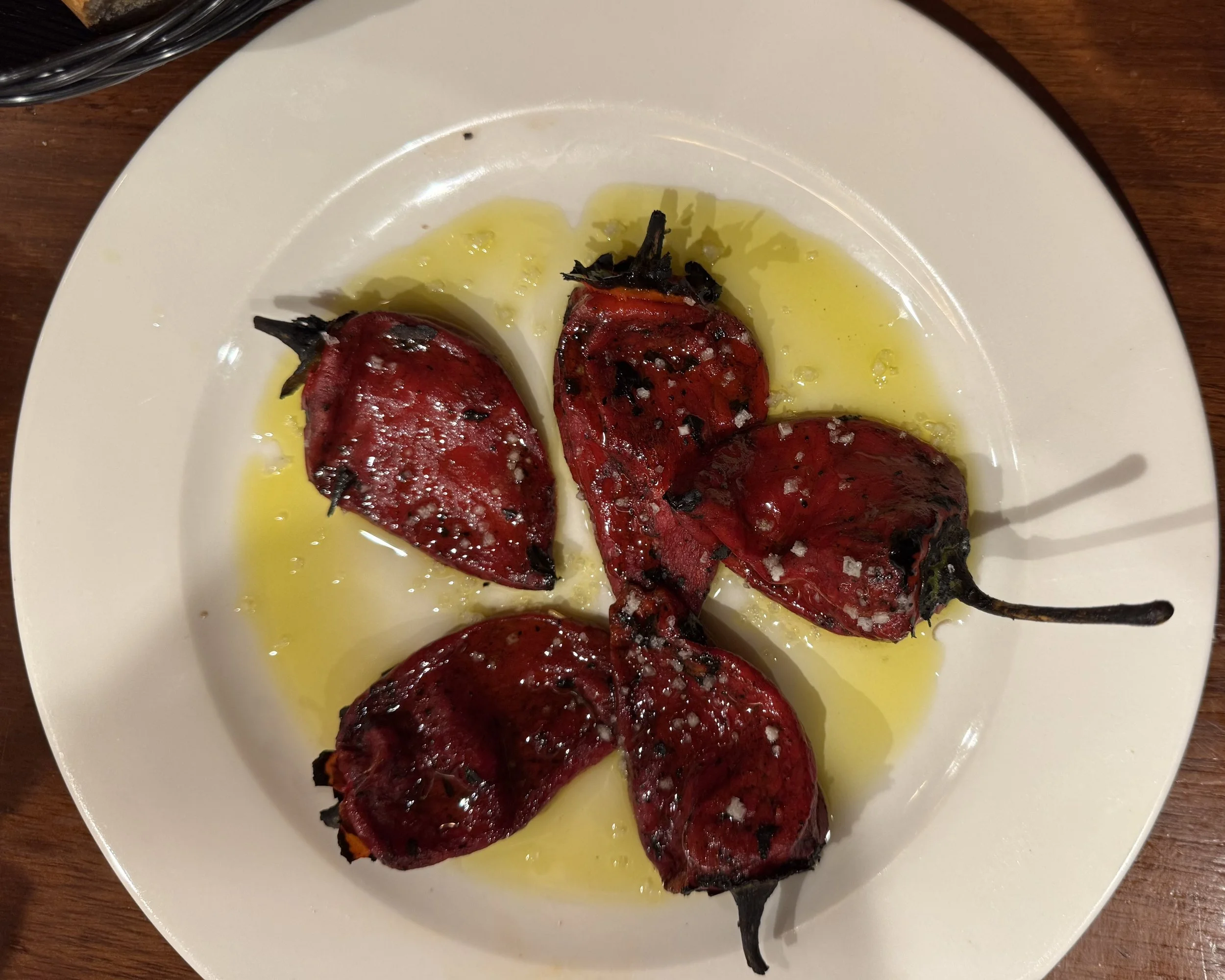I’m obsessed with Piquillo Peppers from Lodosa
Picture this: We’re halfway through class, and I’m about to serve what I call ‘a spoonful of heaven’—a warm, silky piquillo pepper. Right before getting to that spoonful, in the middle of an explanation, a student interrupts—not shocked by the flavor, but by the source. She looks at me, dead serious, and says:
“I can’t believe you’re using peppers from a jar.”
How could it be? In a cooking class, the chef—me—was serving… jarred vegetables?
I froze. I’d never stopped to think how it looked.
For me, jarred peppers were just… normal. I’d grown used to the magic. But the class was not just for her. I had 8 more people in the class, as shocked as I was so I had to respond fast.
My mouth went dry. I had nothing. No explanation, no poetic defense of jarred vegetables.
So I did the only thing I could think of: I served them.
Piquillo peppers while doing some pintxo crawl
And let the peppers fight their own battle.
Let me add context: This was the crescendo. The Txuleta (Ribeye) was the symphony. The peppers? The unexpected encore nobody saw coming.This was an uphill battle; the peppers are served as a complement to the Txuleta (Rib-eye), and, at least locally, animal protein is king.
We’re in the third course. We visited the market, and the butcher told us everything about the cow, where it came from, what their feed was, hell, he could have even told us the name of the cow if we asked.
We’ve been building up this moment and just now we’re introducing the peppers and now, looking back, I understand her disbelief. Yet, they came on top. And the best part: All. By. Themselves.
I’ve served these same peppers to friends, chefs, strangers who didn’t know how to pronounce piquillo. And every time, the reaction is the same: silence. Followed by “Wait… tell me again how is it you cooked them?” Or even better, “So, it’s just the peppers and olive oil?”
That’s when I tell them: These are Piquillos from Lodosa. They’re harvested once a year. And yes, the jar is not a shortcut. It’s a time capsule.
Piquillo peppers are planted in spring and are harvested in September-October, when they hit the perfect spot and balance of sweetness, texture and color. As many other great products with a short season, just like white asparagus, a way to enjoy this guilty pleasure year round was to jar them by roasting them by fire, peeling them by hand and jarring them. And I cannot tell you enough how grateful I am of this tradition.
When harvested in the fall, they have just the right amount of sugar in its thin and delicate flesh. Then, upon roasting once again with some olive oil and minced garlic, you concentrate the natural sugars to a point where, when done right, the wrinkled skin sticks to your teeth like candy—sweet, smoky, and marvelous.
By now, you must be wondering what my girlfriend suspects every time this topic comes up in conversation. I’m going to have to stop you there: No, I’m not sponsored by the D.O. of Piquillo de Lodosa. I think I’m probably the most passionate advocate they could have, but the short answer is I’m not.
So next time you see a jar of Piquillos… don’t judge it by the lid.
Or better yet—come try them with me. Let them change your mind too.


